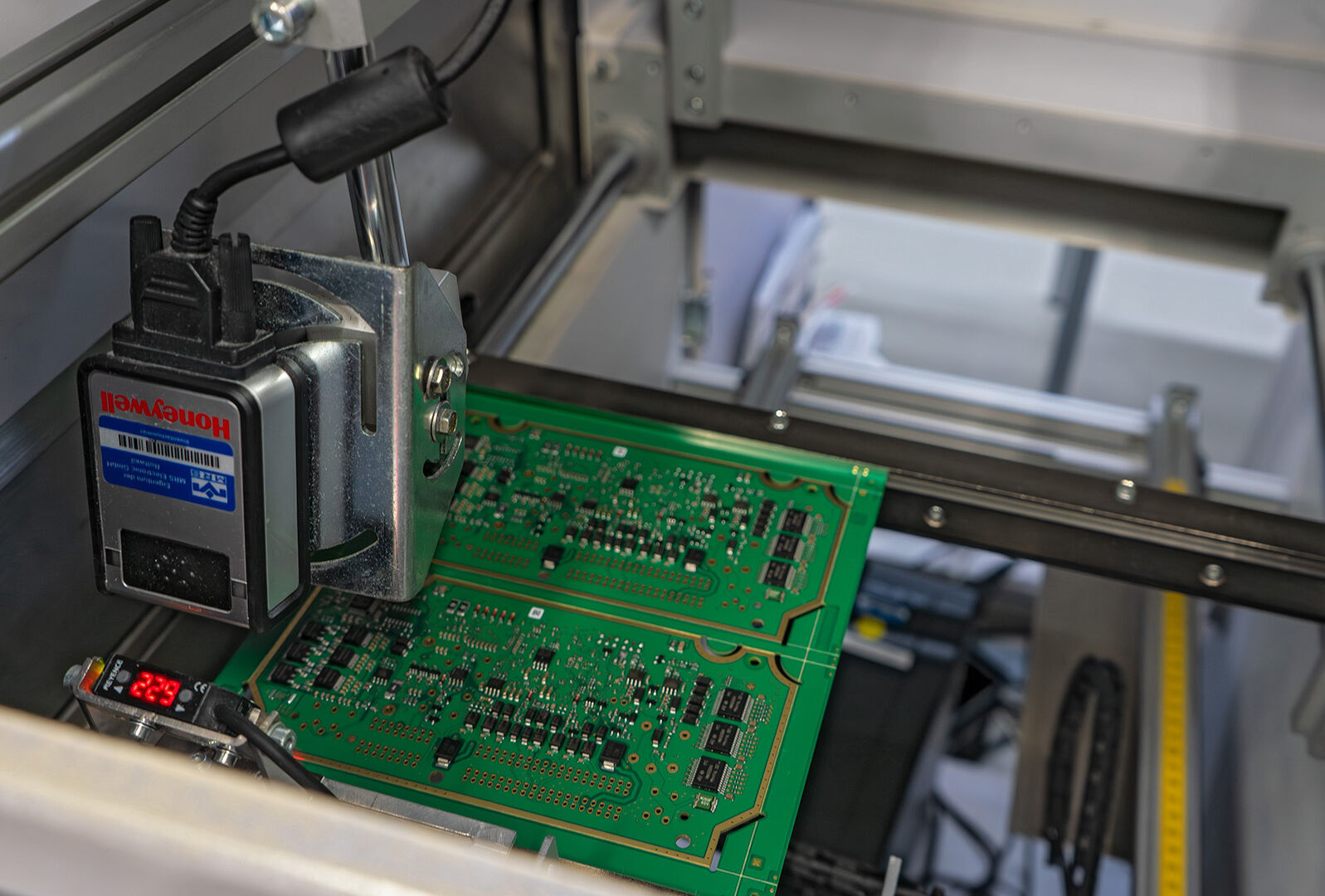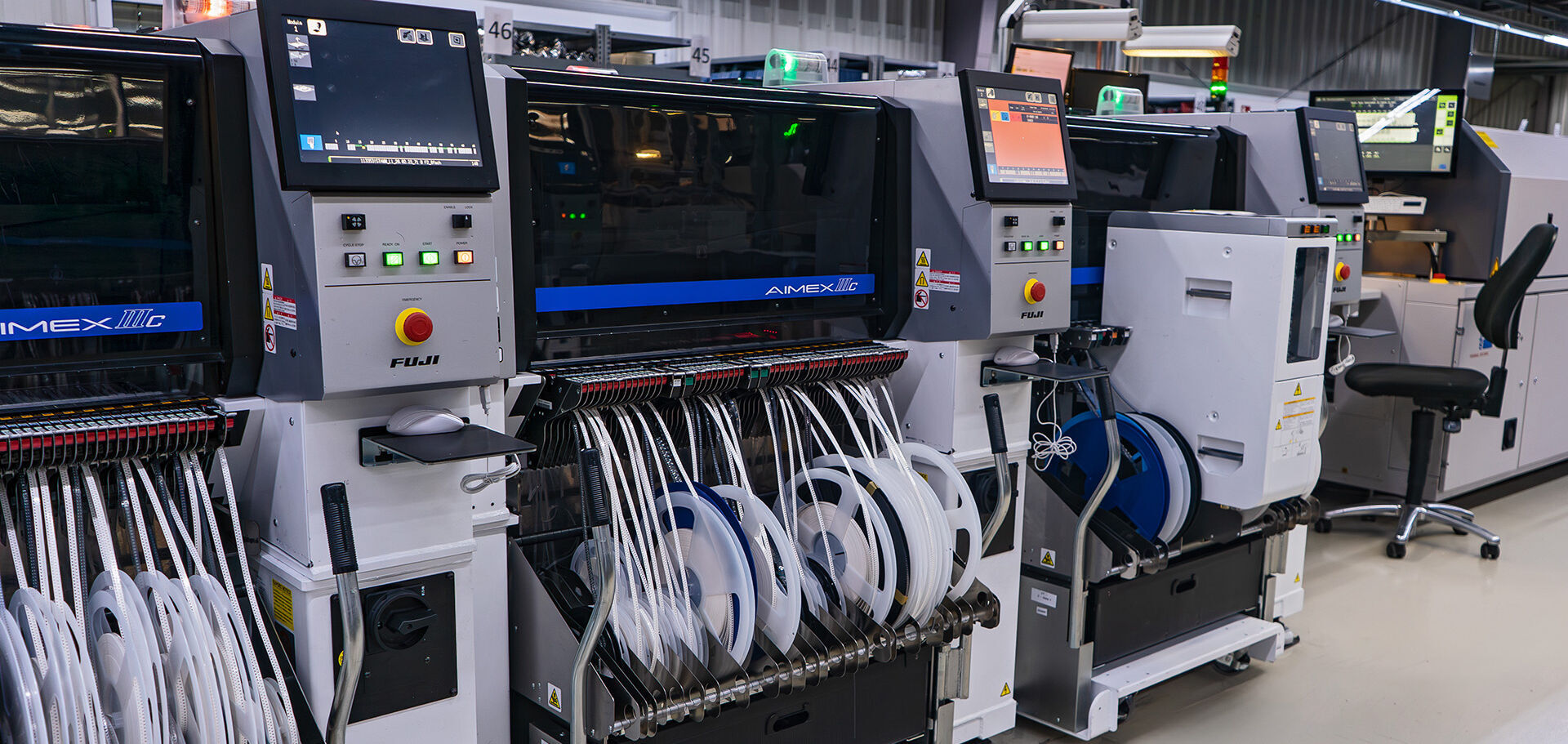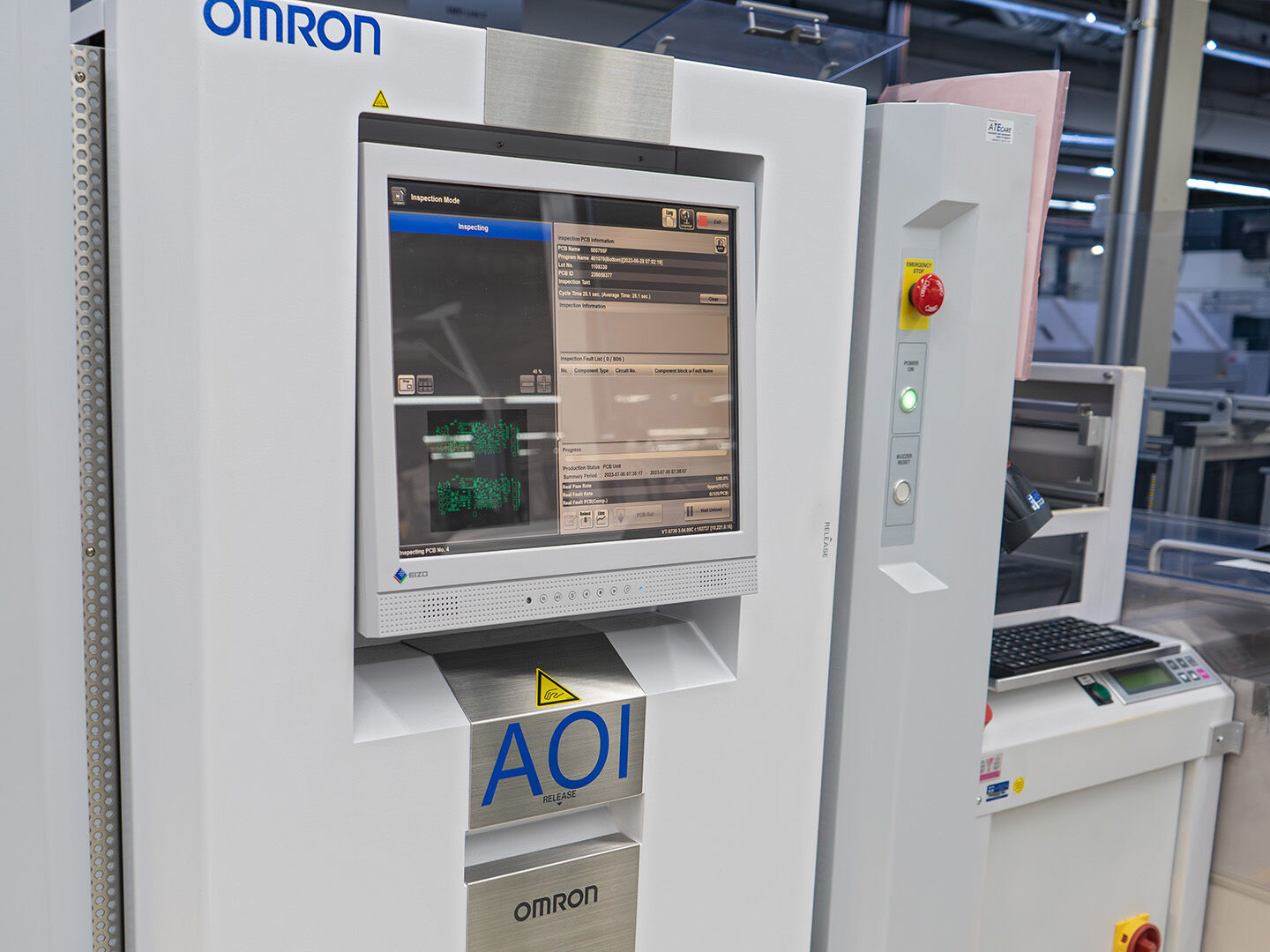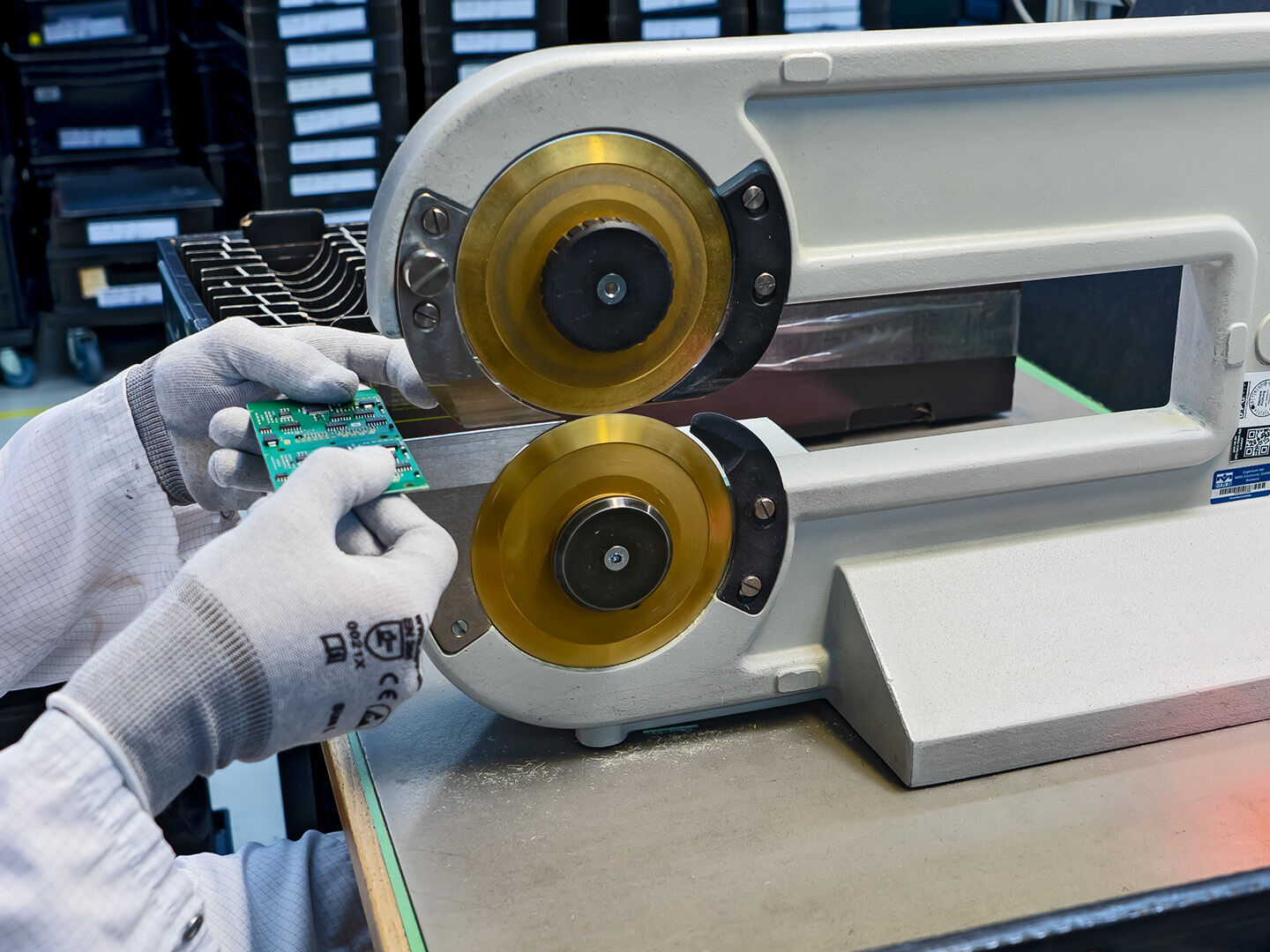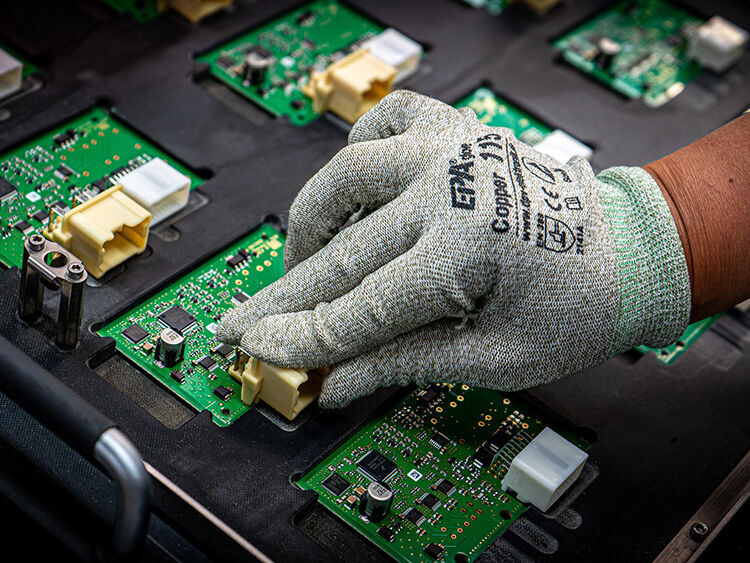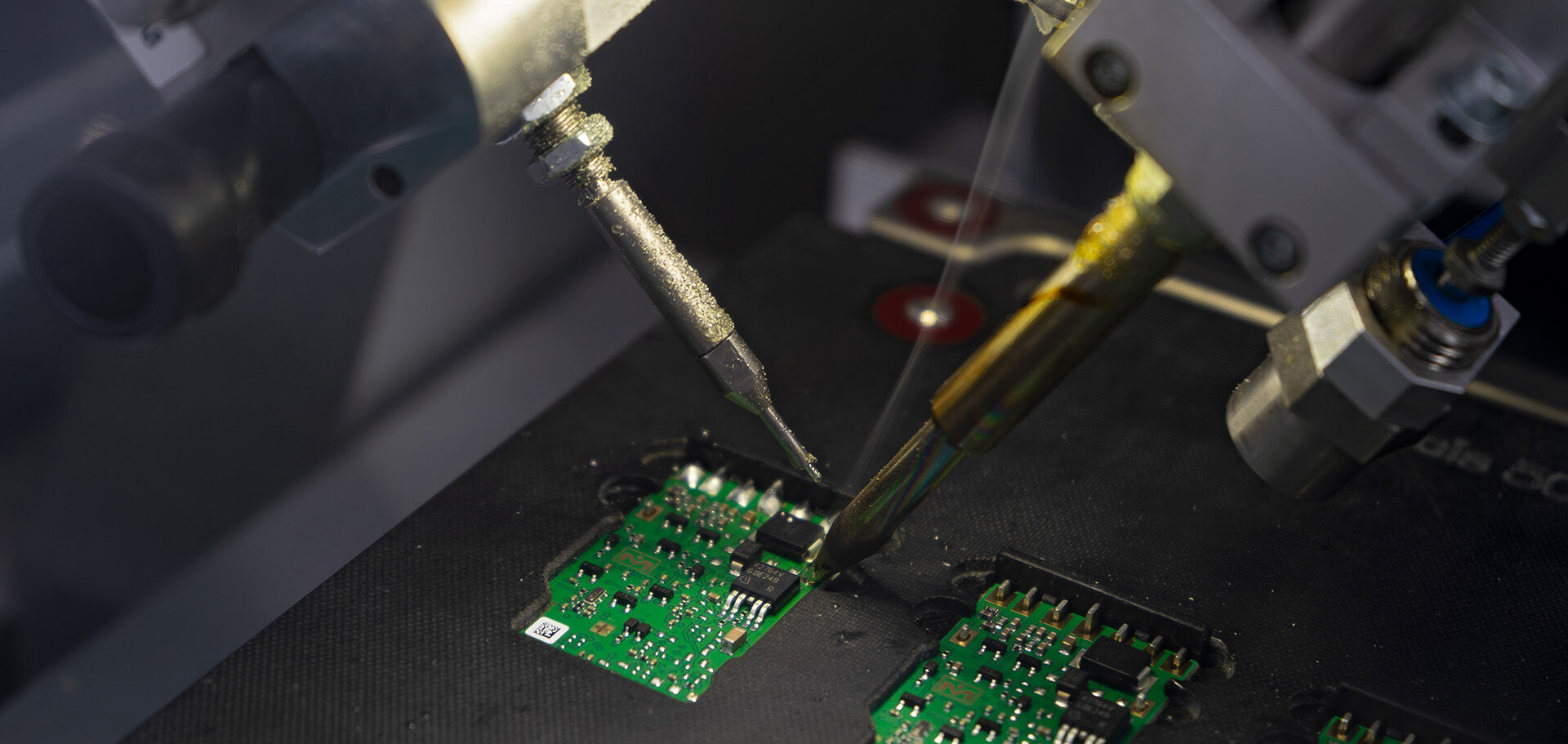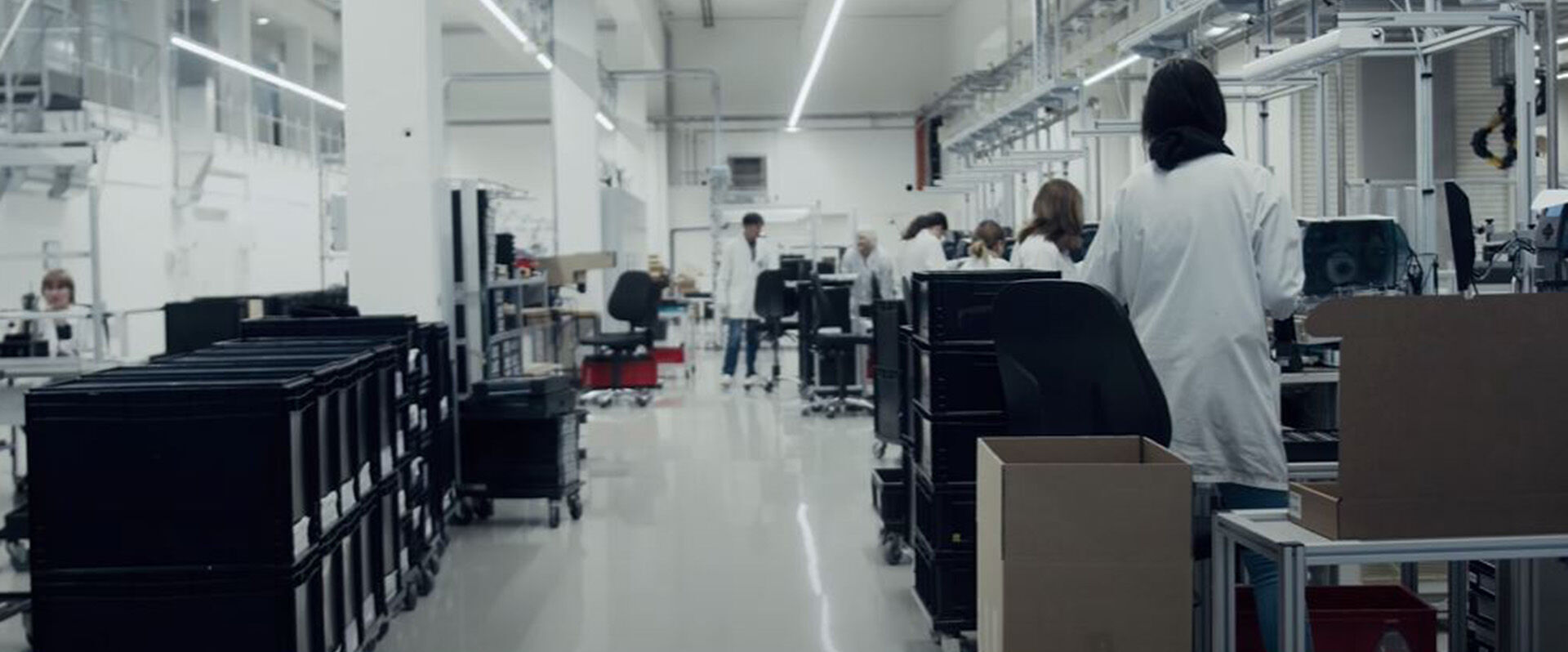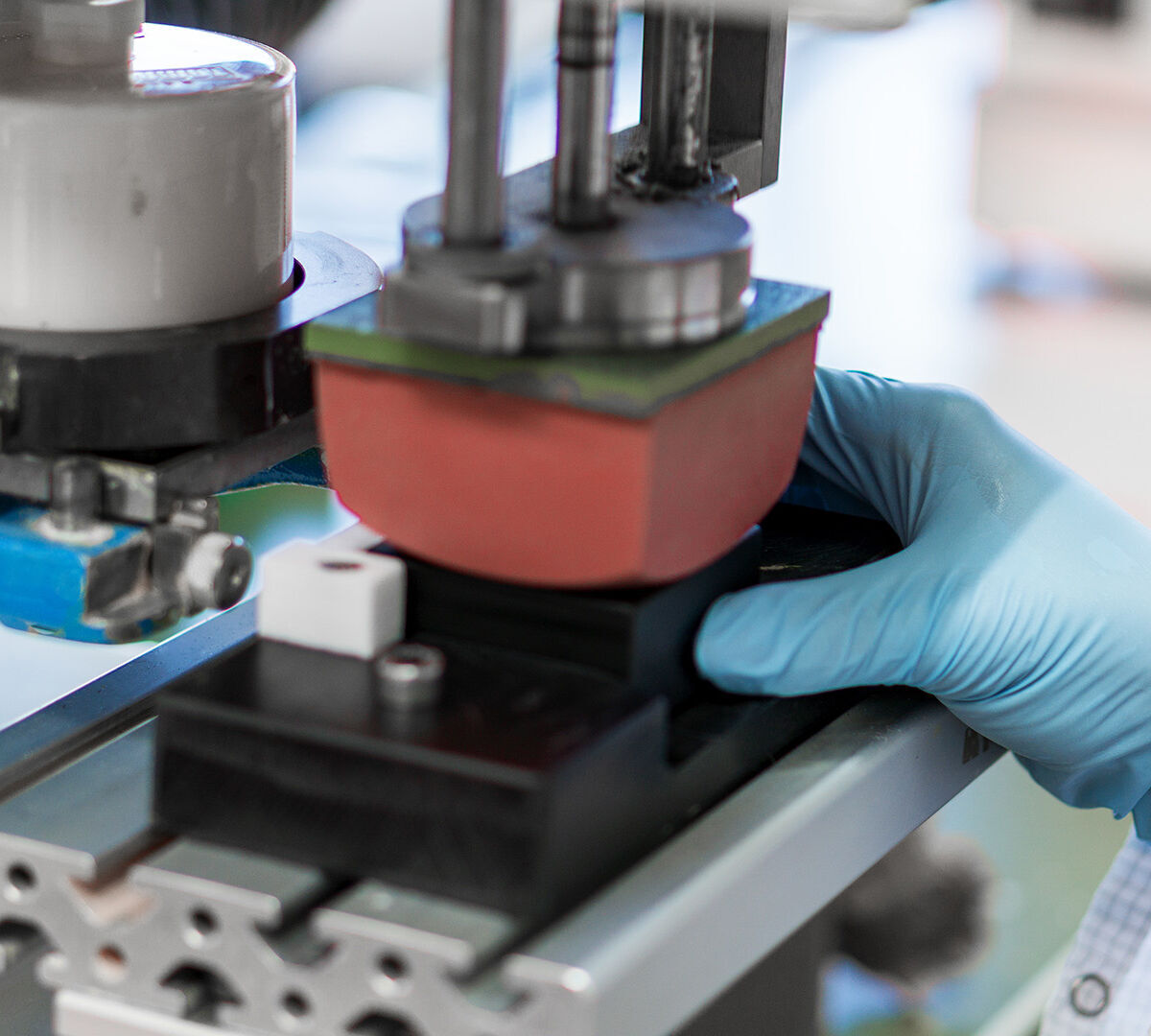With our modern production facilities and internationally recognized certifications, we produce hardware for our standard and customized electronics at our main site in Rottweil. Each product is tested at least four times during the production process.
Step 7: Potting/Painting
Depending on how strongly the module needs to be protected against external environmental influences, it is either completely potted or painted. The potting compound or paint later provides protection against moisture, corrosion and dust and also improves the mechanical protection, thermal resilience and electrical insulation.
